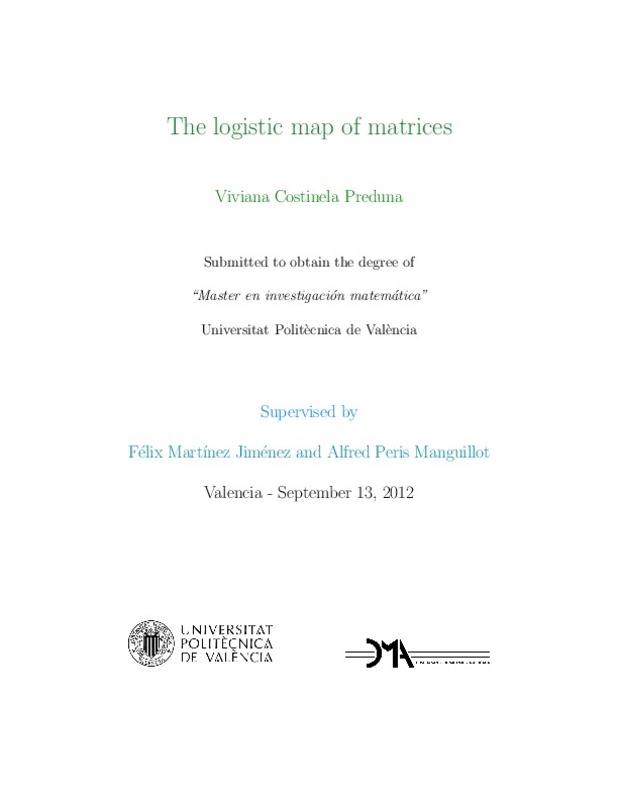JavaScript is disabled for your browser. Some features of this site may not work without it.
Buscar en RiuNet
Listar
Mi cuenta
Estadísticas
Ayuda RiuNet
Admin. UPV
The logistic map of matrices
Mostrar el registro completo del ítem
Preduna, VC. (2012). The logistic map of matrices. http://hdl.handle.net/10251/27378
Por favor, use este identificador para citar o enlazar este ítem: http://hdl.handle.net/10251/27378
Ficheros en el ítem
Metadatos del ítem
| Título: | The logistic map of matrices | |||
| Autor: | Preduna, Viviana Costinela | |||
| Director(es): | ||||
| Entidad UPV: |
|
|||
| Fecha acto/lectura: |
|
|||
| Resumen: |
[EN] The main goal of this work is to show what happens when instead
of the logistic map with a scalar we use a matrix. This work is based on
a paper of 2011 from a investigation team of Lithuania[1]. The logistic
map ...[+]
|
|||
| Palabras clave: |
|
|||
| Derechos de uso: | Reconocimiento - No comercial - Sin obra derivada (by-nc-nd) | |||
| Editorial: |
|
|||
| Titulación: |
|
|||
| Tipo: |
|







